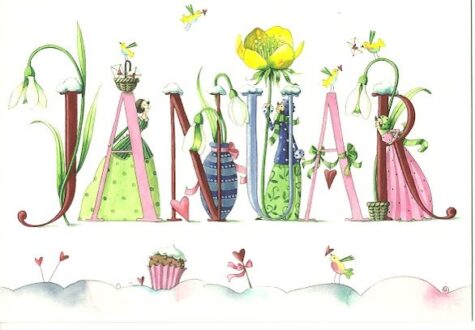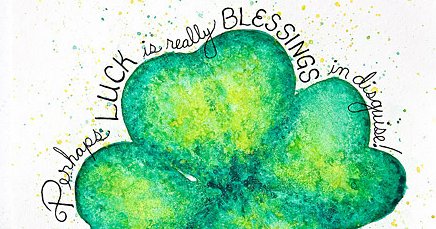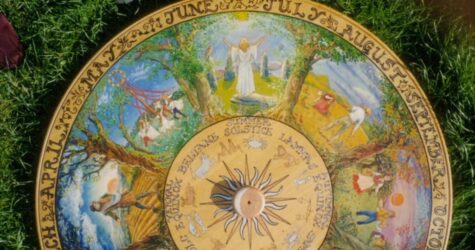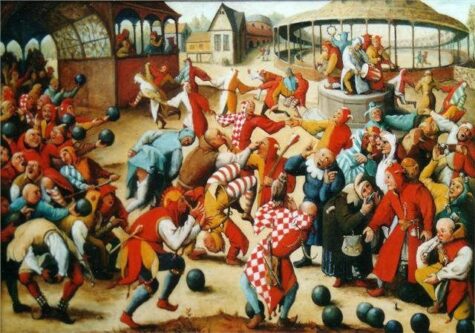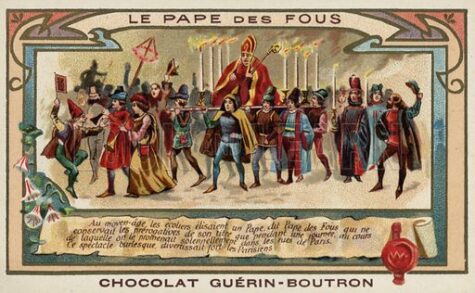Daily Archives: January 1, 2021
There is a lot to celebrate in January. This is a list of pretty much everything that goes on during this first month of the year. Many of these dates change from year to year. The days that change are marked with this » symbol.
Astronomical Events
- 1 thru 5: Quadrantids Meteor Shower
- 13 » New Moon
- 28 » Full Moon, Wolf Moon
Astrological Events
Depending on which astrological system you adhere to, these are the signs that show up in January of 2021. Be aware that some of these dates will vary from year to year. Unlike the Sun signs which might just shift by 1 or 2 days, the dates of the various Moon signs will vary widely from year to year. The same holds true for the Chinese Zodiac. The Celtic Tree Signs are based on an arbitrary system and stay the same from year to year.
Western Astrology
The January Sun begins in Capricorn and finishes up in Aquarius:
- Capricorn: Dec 21 thru Jan 19 » Sun in Capricorn
- Aquarius: Jan 19 thru Feb 17 » Sun in Aquarius
The January 2021 Moon cycles through the signs as follows. You will notice that the Moon might begin the day in one sign and by the end of the day may have moved into another sign, so timing matters if you are wanting to be precise:
- Leo: Jan 1 thru Jan 3 » Moon in Leo
- Virgo: Jan 3 thru Jan 5 » Moon in Virgo
- Libra: Jan 5 thru Jan 7 » Moon in Libra
- Scorpio: Jan 7 thru Jan 9 » Moon in Scorpio
- Sagittarius: Jan 9 thru Jan 11 » Moon in Sagittarius
- Capricorn: Jan 11 thru Jan 13 » Moon in Capricorn
- Aquarius: Jan 13 thru Jan 15 » Moon in Aquarius
- Pisces: Jan 15 thru Jan 18 » Moon in Pisces
- Aries: Jan 18 thru Jan 20 » Moon in Aries
- Taurus: Jan 20 thru Jan 23 » Moon in Taurus
- Gemini: Jan 23 thru Jan 25 » Moon in Gemini
- Cancer: Jan 25 thru Jan 28 » Moon in Cancer
- Leo: Jan 28 thru Jan 30 » Moon in Leo
- Virgo: Jan 30 Thru Feb 1 » Moon in Virgo
The Celtic Tree Signs in January:
- Birch: Dec 24 to Jan 20 – Birch Tree Month
- Rowan: Jan 21 thru Feb 17 – Rowan Tree Month
The Alternative Celtic Zodiac is as follows:
- Apple: Dec 22 – Jan 1
- Fir: Jan 2 – Jan 11
- Elm: Jan 12 – Jan 22
- Cypress: Jan 23 – Jan 31
The Chinese Calendar and Zodiac
According to the Chinese Zodiac we are currently in the Year of the Rat. Each Moon is also assigned a specific animal. Here’s what shows up in January 2021.
- Rat: Dec 7 – Jan 4 (Stem Branch Calendar)
- Rat: Dec 15 – Jan 12 (Lunar Calendar – 11th Lunar Month)
- Cow: Jan 5 – Feb 2 (Stem Branch Calendar)
- Cow: Jan 13 – Feb 12 (Lunar Calendar – 12th Lunar Month)
Note: The traditional Chinese Astrology birth chart is built by the Chinese Stem Branch Calendar, not the Chinese Lunar Calendar, which I think is really confusing. Because of a difference in time zones, the lunar months will have different pattern between China and the USA.
Lucky and Unlucky Days
You might want to plan moving, traveling, major purchases, court dates, and weddings around these dates, avoiding the unlucky days and utilizing the lucky ones. Interestingly, the 1st and the 2nd are both lucky and unlucky.
- These are the lucky days in January:
1, 2, 15, 26, 27 and 28. - These are the unlucky days in January:
1, 2, 3, 4, 6, 11, 12, 13, 14, 20 and 21.
Fatal Days
Of this first month the opening day
And seventh, like a sword will slay.
January Lore and General Info:
- The Theme For January
- January Celebrations and Rituals
- January Activities and Lore
- January Moon Names
Holidays and Holy Days
Many of the holidays begin on the eve of the night before and end on the eve of the day of. It’s also important to remember that the dates of archaic festivals and feast days may vary widely depending on the source.
January 1
- 1: New Year’s Day
- 1: Shichi Fukujin – Seven Deities of Luck Celebration
- 1: Gantan-sai – Shinto New Year Holy Day, see also Shogatsu
- 1: Ethics Day – Day to commit to cultivating personal honor.
- 1: Taos Pueblo Turtle Dance
- 1: Apple Gifting Day
- 1: Daisy Day
- 1 thru 3: Kalends of January
- 1 thru 4: Tewa Turtle Dance – celebrating life and the first Creation, when Sky Father embraced Earth Mother and all life was conceived.
- 1 thru 6: Shogatsu/Shinto New Year’s Festival – The Kami (Nature Spirits) of the four directions are honored, and prayers for happiness, good health, and prosperity are made.
January 2
- 2: Advent of Isis
- 2: Nativity of Inanna
- 2: Mange Loa, also called Breaking of the Cakes, or Jan Case Gateaux
January 3
- 3: Festival of Pax – alternative date Jan 30
- 3: Snow Day
January 4
January 5
- 5: Festival of Lares Compitales
- 5: Feast of Old Roman Goddess Befana
- 5: Twelfth Night
- 5: Avian Day – Day to honor all creatures of the air and to meditate on Deity manifesting as birds.
- 5 » Little Cold begins (Chinese Farmer’s Calendar)
- 5 or 6: Festival of Kore
- 5 and 6: Feast of God Poseidon – dates varied from Dec – Jan
January 6
- 6: Epiphany
- 6: Dia de los Reyes – Three Kings Day
- 6: Haxey Hood (English)
- 6: Taos Pueblo Deer or Buffalo Dance
January 7
- 7: Russian Christmas
- 7: Nativity of Christ
- 7: Genna – Ethiopian Christmas
- 7: Koshogatsu – Shinto rite honoring Goddess Izanami, partner of God Izanagi.
- 7: Feast of Sekhmet – Egyptian New Year’s Day (alternative date Aug 7)
January 8
- 8: Midwives’ Day
- 8 » Dakini Day (Tibetan)
- 8 thru 9: The Haloa
January 9
- 9: Agonalia – Festival of Janus (alternative date Jan 11)
- 9: Raud the Strong’s Day
- 9 » Day of Ekadashi (Hindu)
January 10
- 10: Geraint’s Day (Welsh)
January 11
- 11 » Handsel Monday
- 11 » Plough Monday
- 11 » Distaff Day
- 11 » Seijin-no-hi – Coming of Age Day
- 11 and 15: The Carmentalia – Festival of Carmenta
January 12
- 12 » Night of Hekate Suppers
- 12: The Compitalia
- 12 » Ciwaratri or Siwaratriis (Bali) – Night of the god Shiva. A time for contemplation and purification, the Balinese do not sleep for one night.
- 12 thru 16: Rustic Dionysia (alternative date Nov 28)
January 13
- 13 thru 25: Mid Winter Blot (Midvetr, Midvetrarblot, Jordblot, Thorrablot, Freyrblot) – Old Norse Mid Winter Feast.
January 14
- 14 » The Noumenia
- 14 thru 15: Dondoyaki
- 14 thru 17 » Pongal – Festival of Makar Sankranti
January 15
- 15 » Celebrating The Agathos Daimon
- 15: Black Christ Festival (Guatemala)
- 15 : Dōsojin Matsuri – Japanese Fire Festival – dates may vary
January 16
- 16: Festival of Concordia
- 16 and 17: Old Greek festival in which offerings were made to the Wind Gods of the Eight Directions.
January 17
- 17: Good Luck Day – Festival of Felicitas
January 19
- 19: Blessing of the Waters
- 19: Popcorn Day
- 19: Timkat – Ethiopian Epiphany
January 20
- 20: World Religions Day
- 20 » Severe Cold begins (Chinese Farmer’s Calendar)
- 20 » Bodhi Day
January 21
- 21 thru 23: Mahayana New Year
January 22
- 22 » Thorrablot (Þorrablót)
January 24
- 24: Feriae Sementivae – Blessing the Seeds
- 24 » Day of Ekadashi (Hindu)
- 24: Gold Rush Day
- 24: Festival of Ekeko (Bolivian) – lasts 3 weeks
- 24 thru Feb 6: Iroquois Mid-Winter Ceremony – dates vary, generally the last part of January or the first part of February
January 25
- 25: Burns Supper
January 27
- 27 thru 28 » Tu B’shvat – New Year for Trees
- 27 thru Feb 3: Powamu Festival (Hopi) – dates vary, an 8 day festival held around the end of January or beginning of February
January 28
- 28: Daisy Day
January 29
- 29: Gamelion Noumenia – Old Greek festival honoring all the Gods and Goddesses.
- 29: Red Carnation Day
January 30
- 30: Up Helly Aa – Scottish Viking celebration
- 30 » Saraswati Day (Bali), in honor of Batari Dewi Saraswati, the goddess of knowledge. No reading or writing is allowed on this day, books are taken to the goddess to be blessed.
- 30 thru 31: Feast of the Charities – dates vary widely also listed as Jan 17 – 18, Apr 18 – 19, May 26, Jul 9 – 10, or Oct 13.
- 30 thru Feb. 2: Februalia
January 31
- 31: Disfest/Disablot
- 31 » Banyu Pinaruh – Balinese go, at dawn, to beaches, rivers or other water sources, to pray for wisdom and to purify themselves.
- 31 thru Feb 3: Old European Lunar New Year – Celebration of the Triple Goddess (Goddess of the Moon and the Seasons) being transformed from the Crone into the Virgin; celebrated with ritual bathing of divine images.
- 31 thru Feb 8: Navajo Sing – Festival in preparation for the coming agricultural season; celebrated with prayer, chanting, dancing, and healing.

Saint Days
There is a surprising amount of magick associated with Saint days This is a very short list of the Saint days in January, there are many many more. As time goes by I may end up listing them all, but for now, this is what I have.
- 1: St Basil’s Day
- 13: St Knut’s Day
- 16: St Peter’s Day – also Jun 29
- 21: Eve of St Agnes
- 22: Feast of St Agnes
- 25: St Paul’s Day
- 25: St Dwynwen’s Day
Recipes For January
Many seasonal recipes, including recipes for new and full moon ceremonies, ancient Greek and Roman holidays, Asian festivals and etc can be found here: Seasonal Recipes.
Notes:
Any January lore, almanac, astrological, and celebration dates that have been shared after this post was published can be found by searching the January posts to see what’s new.
A lot of work went into this post. It was compiled from various sources by Shirley Twofeathers for The Pagan Calendar, you may repost and share without karmic repercussions, but only if you give me credit and a link back to this website. Blessed be.
Feast of Fools was a celebration marked by wanton mischief and merrymaking. It took place in many parts of Europe, and particularly in France, every year during the later middle ages on or about the Feast of the Circumcision (1 Jan.). This feast day, as described by the French theologians who condemned it in 1445, sounds like a ton of fun.
This New Year’s Day celebration, they wrote, caught up high-ranking church officials in a bacchanal unworthy of their exalted positions.
“Priests and clerks may be seen wearing masks and monstrous visages at the hours of office,” the theologians recounted, presumably with a sniff of horror. “They dance in the choir dressed as women, panders or minstrels. They sing wanton songs. They eat black puddings… while the celebrant is saying mass. They play at dice… They run and leap through the church, without a blush at their own shame.”
The Feast of Fools was celebrated by the clergy in Europe during the Middle Ages, initially in Northern France, but later more widely. During the Feast, participants would elect either a false Bishop, false Archbishop or false Pope. Ecclesiastical ritual would also be parodied and higher and lower level clergy would change places.
It was known by many names:
- Festum
- Fatuorum
- Festum stultorum
- Festum hypodiaconorum
Officially banned in the 15th century, the Feast of Fools had its origins 300 years before, in the 1100s, and continued as a tradition well into the 16th century. It was memorialized in church documents condemning its excesses and in paintings depicting streets full of merry chaos. It appears in Victor Hugo’s famous 19th century novel, The Hunchback of Notre Dame, when Quasimodo is swept up in the festivities and crowned King of Fools.
This rowdy revelry may never has been quite as raucous as was rumored. It started out as a much tamer liturgical celebration, which accrued an outsized reputation for subversiveness. At its heart, though, the Feast of Fools always turned power on its head—a reversal that naturally made church leaders very nervous.
But outside the church doors, concurrent celebrations were much more irreverent. In these medieval centuries, Harris writes, it became popular for students to parade through the streets with their faces blackened with mud (or even animal dung) to conceal their identities while they parodied clergy, doctors, civil officials, and rulers. These parades certainly featured cross-dressing, drinking, singing, and all manner of other mischief and behavior that usually wouldn’t be tolerated.
Wintertime celebrations like these, where the less powerful parts of society had the chance to break loose for a day, trace their roots to Roman and other European pagan festivals of role-reversal. For a modern day take on this holiday, visit this Feast Of Fools post.
It is difficult to distinguish it from certain other similar celebrations, such as the Feast of Asses, and the Feast of the Boy Bishop. It seems to have grown out of a special “festival of the subdeacons”, which John Beleth, a liturgical writer of the twelfth century and an Englishman by birth, assigns to the day of the Circumcision.
He was among the earliest to draw attention to the fact that, as the deacons had a special celebration on St. Stephen’s day (26 Dec.), the priests on St. John the Evangelist’s day (27. Dec.), and again the choristers and mass-servers on that of Holy Innocents (28 Dec.), so the subdeacons were accustomed to hold their feast about the same time of year, but more particularly on the festival of the Circumcision.
This feast of the subdeacons afterwards developed into the feast of the lower clergy (esclaffardi), and was later taken up by certain brotherhoods or guilds of “fools” with a definite organization of their own. There can be little doubt — and medieval censors themselves freely recognized the fact — that the license and buffoonery which marked this occasion had their origin in pagan customs of very ancient date.
John Beleth, when he discusses these matters, entitles his chapter “De quadam libertate Decembrica“, and goes on to explain: “now the license which is then permitted is called Decembrian, because it was customary of old among the pagans that during this month slaves and serving-maids should have a sort of liberty given them, and should be put upon an equality with their masters, in celebrating a common festivity.” (P.L. CCII, 123).
The Feast of Fools and the almost blasphemous extravagances in some instances associated with it have constantly been made the occasion of a sweeping condemnation of the medieval Church.
There can be no question that ecclesiastical authority repeatedly condemned the license of the Feast of Fools in the strongest terms, no one being more determined in his efforts to suppress it than the great Robert Grosseteste, Bishop of Lincoln. But these customs were so firmly rooted that centuries passed away before they were entirely eradicated.
In defense of the medieval Church one point must not be lost sight of. We possess hundreds, not to say thousands, of liturgical manuscripts of all countries and all descriptions. Amongst them the occurrence of anything which has to do with the Feast of Fools is extraordinarily rare. In missals and breviaries we may say that it never occurs.
In 1199, Bishop Eudes de Sully imposed regulations to check the abuses committed in the celebration of the Feast of Fools on New Year’s Day at Notre-Dame in Paris. The celebration was not entirely banned, but the part of the “Lord of Misrule” or “Precentor Stultorum” was restrained within decorous limits.
The central idea seems always to have been that of the old Saturnalia, i.e. a brief social revolution, in which power, dignity or impunity is conferred for a few hours upon those ordinarily in a subordinate position. Whether it took the form of the boy bishop or the subdeacon conducting the cathedral office, the parody must always have trembled on the brink of burlesque, if not of the profane.
We can trace the same idea at St. Gall in the tenth century, where a student, on the thirteenth of December each year, enacted the part of the abbot. It will be sufficient here to notice that the continuance of the celebration of the Feast of Fools was finally forbidden under the very severest penalties by the Council of Basle in 1435, and that this condemnation was supported by a strongly-worded document issued by the theological faculty of the University of Paris in 1444, as well as by numerous decrees of various provincial councils. In this way it seems that the abuse had practically disappeared before the time of the Council of Trent.
Sources:
